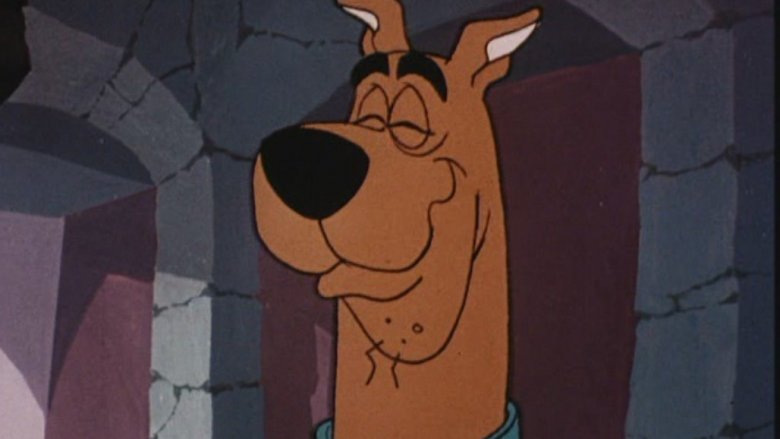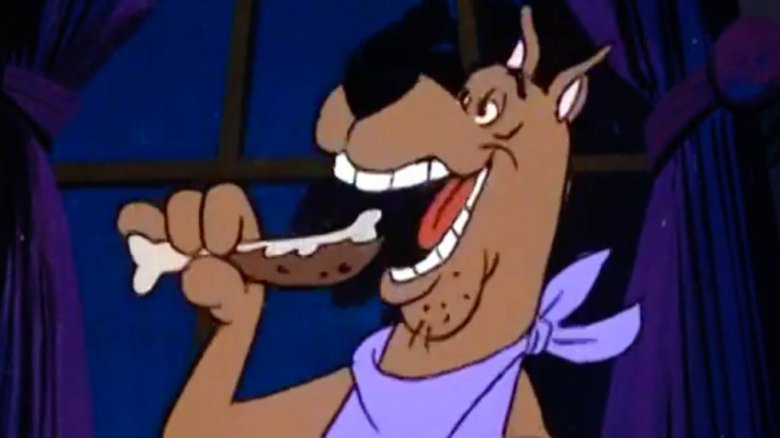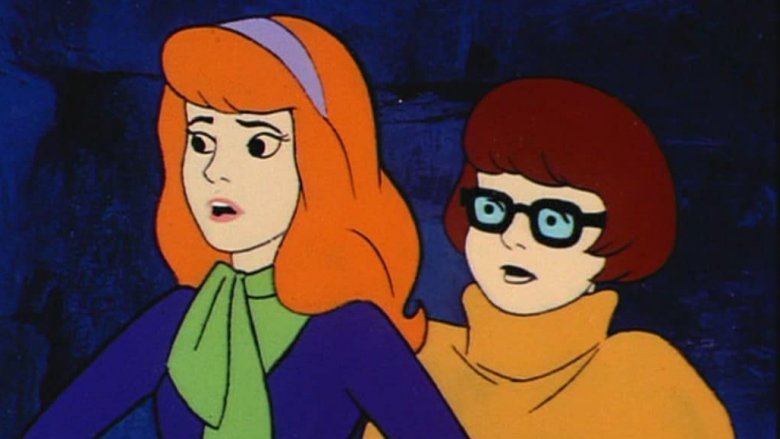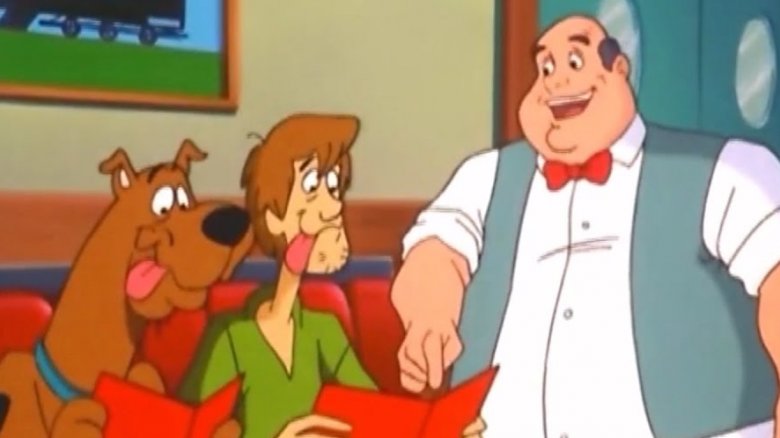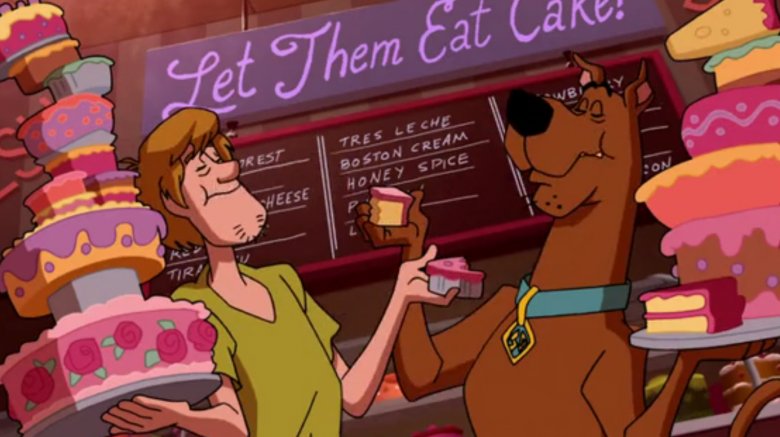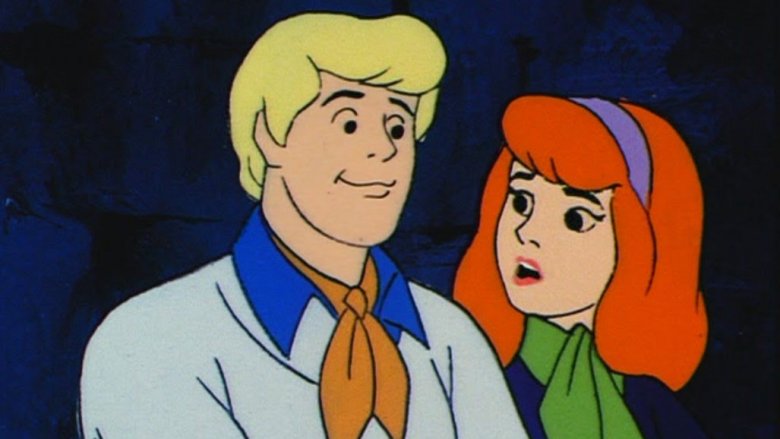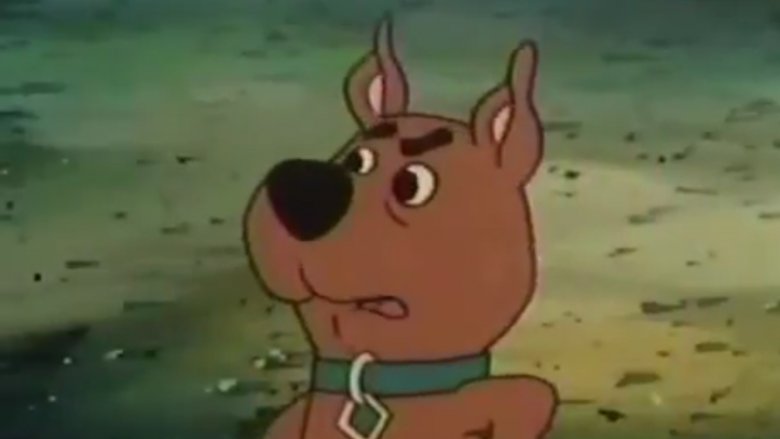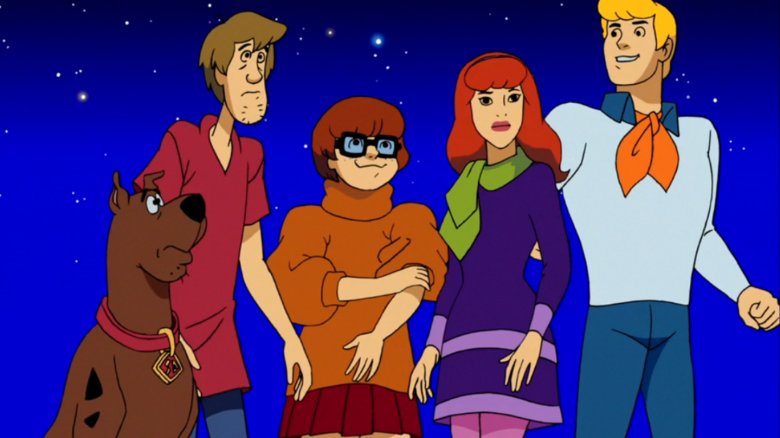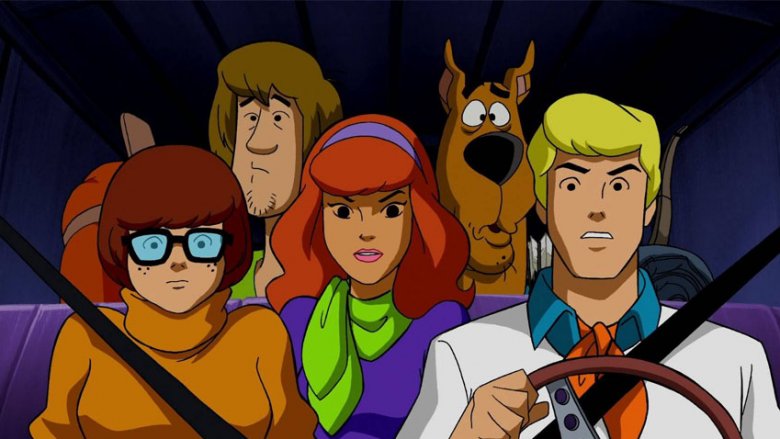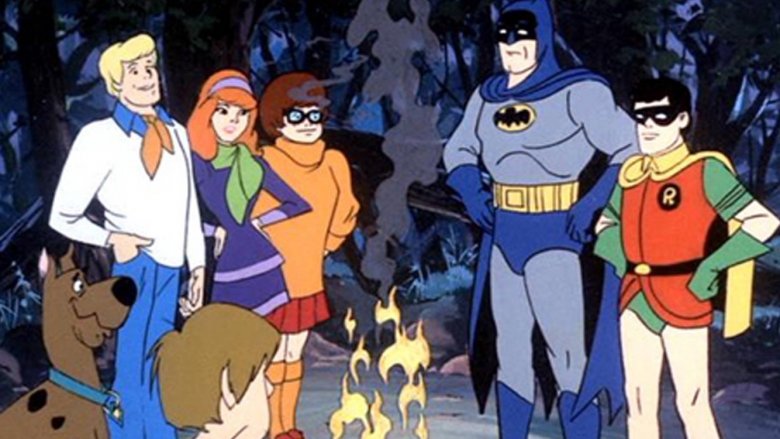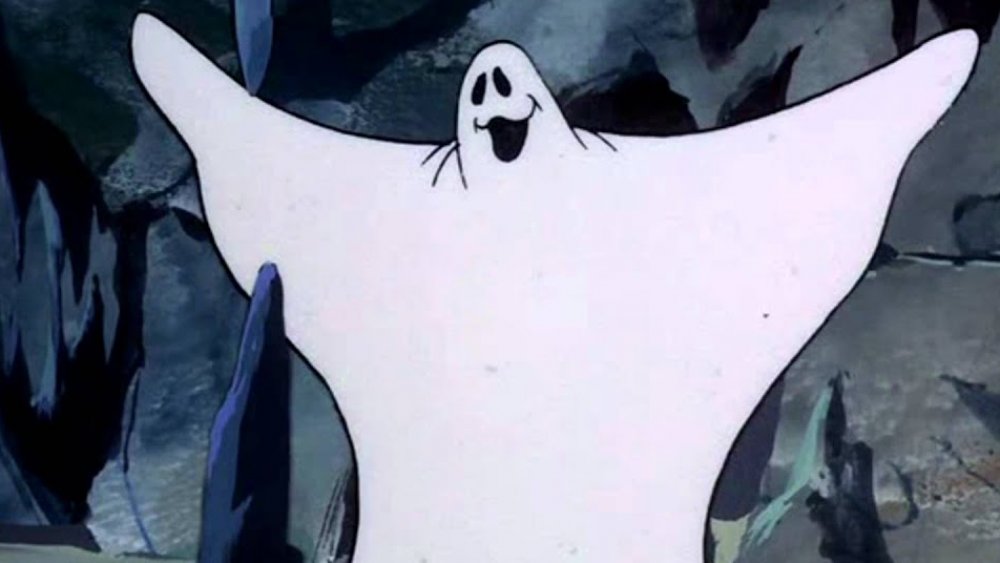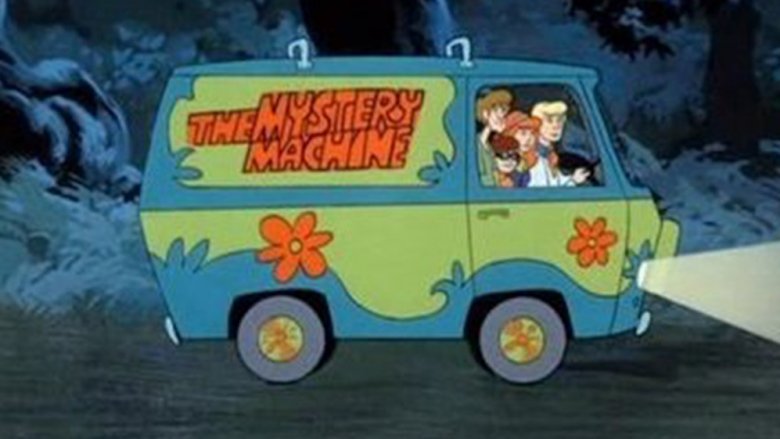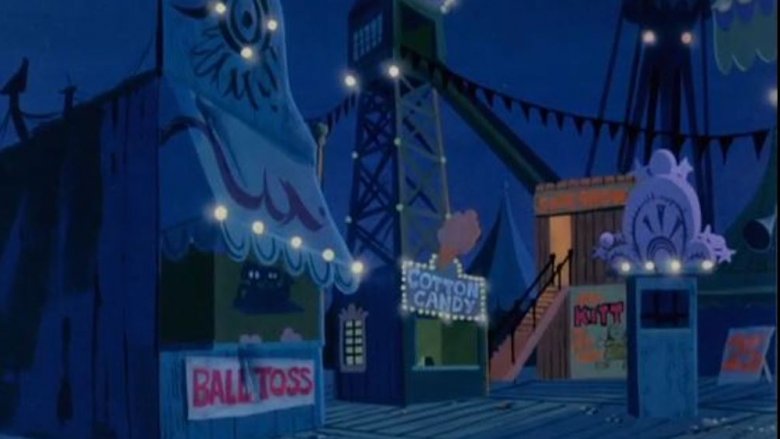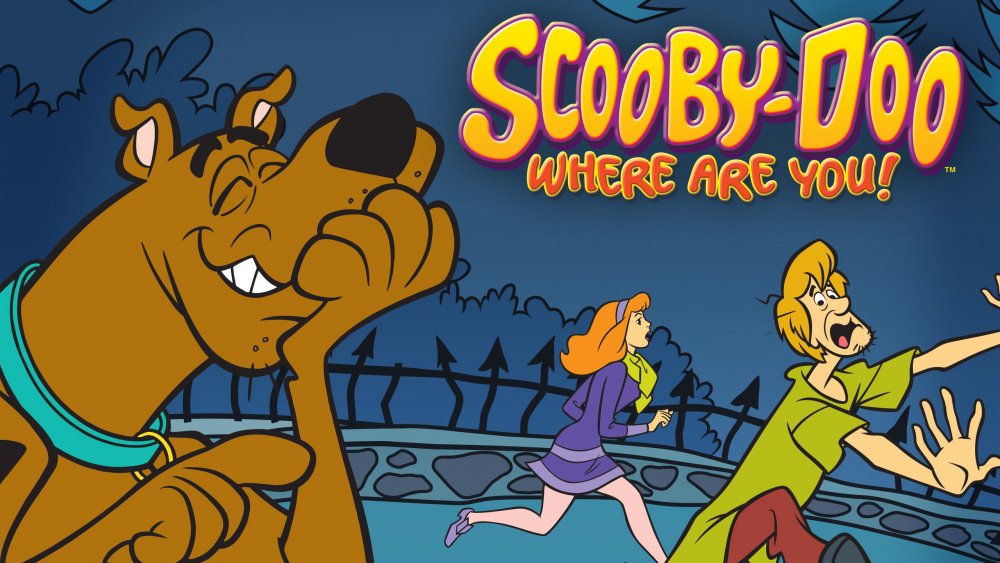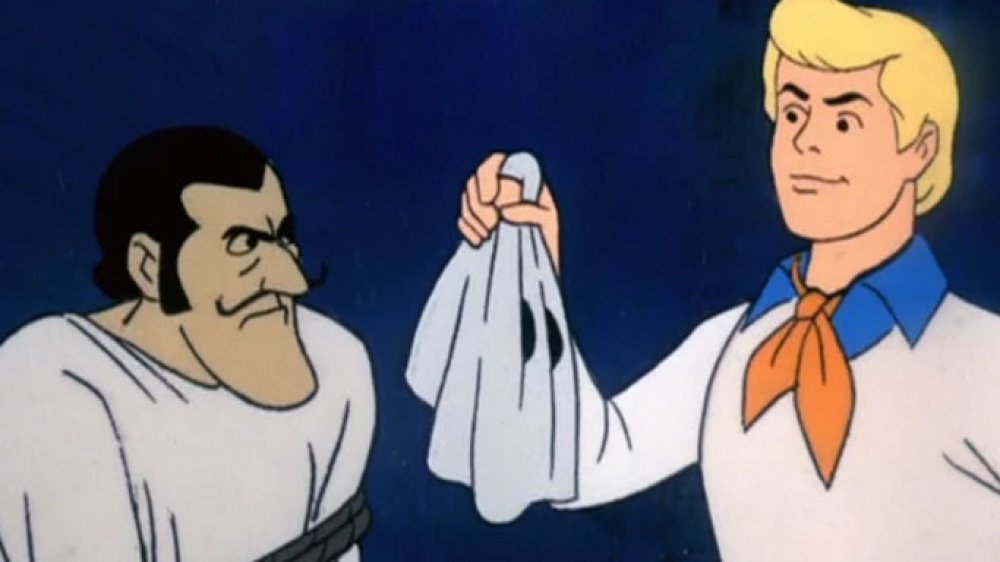Things You Only Notice In Scooby-Doo As An Adult
The Simpsons' 30-year run on primetime TV is certainly an achievement, but that doesn't make it the longest-lived animated television franchise. The snickering Great Dane known as Scooby-Doo and his mystery-solving humans-in-arms have been unmasking villains to the delight of children and adult viewers alike for 50 years now. Scooby-Doo, Where Are You!, the first series to feature Scooby and the gang (Fred, Velma, Daphne, and Shaggy), debuted in 1969, back when Nixon was president and the Beatles were still together.
Through decades of spinoffs, reimaginings, and cross-overs (including The New Scooby-Doo Movies, Scooby's All-Star Laff-a-Lympics, Scooby-Doo and Scrappy-Doo, The 13 Ghosts of Scooby-Doo, and Be Cool, Scooby-Doo!), those meddling kids have never stayed away from children's programming blocks for long. Kids love Scooby-Doo, but there's so much they might not catch until after they've grown up with its many incarnations. Here's the most suspect stuff in Scooby-Doo shows that only grown-ups pick up on... which may give you second thoughts about letting kids watch.
Everyone is very blasé about a hyper-intelligent, talking dog
Scooby-Doo and his crime-solving, van-dwelling Mystery, Inc. friends have entertained several generations of juvenile cartoon fans who don't seem to care about the clunky animation or the dated, hippie-era clothes and slang. Scooby-Doo is so familiar that we all tend to overlook its central conceit: one of the main characters is a talking dog. Even more unbelievable and inexplicable than a Great Dane speaking and expressing human thoughts and emotions are the reactions of the people around him.
Shaggy, Fred, Velma, Daphne, and the various criminals they bust are not at all impressed or freaked out by Scooby. Seriously, there is a talking dog with advanced intelligence, which makes him either a marvel of nature (if he was born that way) or science (if some mad doctor altered his brain). But everybody just listens and converses with ol' Scoob like it's the most normal thing in the world.
They're all gonna laugh at you!
Kids tend to take things as they come and at face value, particularly when it comes to entertainment. They let the moving images and loud noises wash over them without any judgment, because they have little to no frame of reference yet for what is and isn't weird about a television show. Those little tykes don't even recognize how completely strange, off-putting, and totally inappropriate it is that those old Scooby-Doo cartoons have a laugh track.
Ostensibly, the laughter is placed on the soundtrack to remind young viewers that the show, despite the spooky situations and alleged ghosts, is supposed to be a light-hearted comedy. But it seriously makes no sense at all. A laugh track suggests that a show was filmed in front of a studio audience, and that the laughter is coming from people watching the show live. Scooby-Doo is a cartoon, so there wouldn't and couldn't be a live audience. Then again, since this is Scooby-Doo, maybe those laughs are coming from ghosts, or, more likely, it's part of the evil plot of a corrupt amusement park owner.
Shaggy and Scooby sure get hungry a lot
While kids may not notice, the teenagers and college-aged individuals who watch Scooby-Doo on cable TV late at night are definitely clued in to Shaggy and Scooby's, uh, habits. Actually, it's probably the reason why some of them watch. Scooby-Doo cartoons are a "stoner" classic, beloved for their good vibes and how Shaggy and his trusty dog embody many characteristics of the marijuana enthusiast.
A children's cartoon would never explicitly state that a character would be more comfortable with Cypress Hill than Hank Hill, but clues are so bountiful that the Mystery Machine doesn't exactly need a "Legalize It!" bumper sticker. Shaggy and Scooby can sometimes be seen emerging from a big smoke cloud for example. Also, those two are obsessed with food, particularly junk food, and constantly consume large quantities of it. It's almost as if these two giggling slackers, one of whom wears bell-bottom pants and sports unkempt hair, have the munchies or something. Side note: if Shaggy does smoke marijuana with his dog, isn't that animal abuse?
Like, it's totally cruelty-free, Scoob
Shaggy and Scooby have always cared more about finding their next meal than doing their job, which is solving mysteries. Frankly, they're terrible and lazy workers who have no business being employed by Mystery, Inc. Goal number one for these two has always been to eat, and to eat as much as possible, so as to quell an often raging case of the munchies. But while they eat tons indiscriminately, they actually do have a few dietary restrictions.
Adults will notice in some latter-day episodes that Shaggy often verbally expresses his desire for veggie sandwiches and other substitutes for fast food staples. This is no accident — Shaggy moved away from meat as a stipulation of the guy who provided his voice. Legendary disc jockey Casey Kasem didn't eat meat, and he wanted to use his access to a captive audience of kids to extol the benefits of a vegetarian diet.
Fred is a bit skeevy and manipulative
Every Scooby-Doo episode seems to follow a formula: the gang drives through the night, comes across a potentially haunted location, and gets down to business looking for clues. Then, in what is never a good idea when surveying and trespassing on a decrepit and abandoned place full of dangers (and possibly ghosts or monsters), the four humans decide to split up into search parties. While that's already inadvisable, Fred, seemingly the self-appointed leader, has to go and make things predatorial.
Whenever the pairings are made, Fred dictates who will go off with whom. Invariably, he pairs himself up with Daphne, who is clearly the subject of his intense romantic interest. Heck, he barely even addresses the other members of Mystery, Inc. when he can help it. No matter what case they're on, Fred never fails to get Daphne alone with him in darkened rooms so they can "investigate." What a creep!
Nobody wants you, Scrappy-Doo
Almost universally loathed and regarded as one of the most unnecessary and annoying characters in cartoon history, Scrappy-Doo is the pint-sized, supposed-to-be cute version of Scooby. Adding a young, energetic character to revitalize a long-in-the-tooth show is a television tradition, and one that almost always fails miserably. Savvy grown-up viewers can see it for what it is: a cynical grab at ratings and attention. The Brady Bunch didn't exactly become a juggernaut when Cousin Oliver came to live with Mike and Carol.
Just look at the "Poochie" episode of The Simpsons for a perfect satire of this phenomenon and why it so rarely works — "Itchy & Scratchy" viewers are instantly alienated by this totally in-your-face character who adds nothing of value to the show. Scrappy-Doo is exactly like Poochie, contrasting Scooby's laid-back fraidy-cat energy by being aggressive and perpetually angling for a fist-fight. Not only is he a character nobody asked for and nobody wants, he's also a bit disturbed.
They're hot and they're cold
Children often refuse to get bundled up to go outside, no matter how much their parents implore them. Subsequently, they might not notice that Scooby-Doo seems to take place in a bizarre world of meteorological anomalies, where it is always dark and seemingly cold. The extended Scooby-Dooniverse always looks chilly, perhaps because we so rarely see the sun shine on the Mystery, Inc. crew. The near-omnipresent fog also suggests a cool climate, as does Velma's sartorial choice of a cozy orange turtleneck sweater.
However, all of this is confused by some other wardrobe selections. Velma pairs that bulky sweater with a miniskirt, Daphne opts for a leg-baring number, and Shaggy wears a T-shirt. So, maybe it is warm out? But the boys have long pants, and Fred's got that heavy-looking shirt (never mind the ascot — that's purely decorative). Just what temperature is it in this world?
An age-old problem
Talking dog aside, the cast of most every Scooby-Doo show is led by the same four humans of Mystery, Inc.: Fred Jones, Daphne Blake, Velma Dinkley, and Norville "Shaggy" Rogers (yep, his real name is Norville). Together, this unlikely foursome who don't seem to have much else in common travel the land in their psychedelic van, solving mysteries and debunking supernatural phenomena. That much is clear, but what isn't is just how old they're all supposed to be. They're all at least teenagers, because they'd have to be 16 to drive that sweet van. Also, making them teens would make them as close as possible to the shows' demographic of children, and therefore more relatable. Plus, the villains love to call them "meddling kids."
But it also seems like they must be at least in their 20s, because teenagers wouldn't likely be found living unsupervised on the open road. For that matter, why are they out on their own? Are they homeless? Fleeing something ghastly? The show was originally produced in the late '60s and early '70s, so maybe the "mystery" of Mystery, Inc. is that Fred and Shaggy dodged the draft to avoid shipping out to Vietnam.
Is this the real life?
When it began, Scooby-Doo was a silly, formulaic cartoon about a dog and some young people encountering ghosts, which always turn out to be shady business owners trying to scare somebody off their property. To mix it up in the '70s, writers and animators had the mystery-solvers interact with guest stars — living, dead, and even fictional. That makes the "reality" of Scooby-Doo a little tough to define.
For example, in one installment, Scooby and friends meet Laurel and Hardy, the famous comedy duo. Those are actual people who lived, but both died long before the episode aired. On other occasions, the Doo crew meets Sonny and Cher, Don Knotts, Josie and the Pussycats, and Batman. This implies that the characters are "real," because they interact with actual living humans. But if some of those humans are dead, does that mean the Mystery Machine is unstuck from time? And is Batman real too? Fiction and reality are confusingly blurred, placing Scooby-Doo in the same realm as The Matrix or Curb Your Enthusiasm.
They shouldn't be afraid of no ghosts
A sense of narrative tropes and the cliches that go along with mass-media storytelling are things that are learned over time. Young Scooby-Doo viewers likely haven't yet figured out that the shows tend to follow similar trajectories and endings. What was thought to be a haunted building isn't haunted at all, and the very believable ghosts, goblins, spooks, and specters were some combination of projections, shadows, and masked bad guys. In other words, Scooby-Doo constantly reiterates that ghosts aren't real, and there is always a logical explanation for any supernatural entity (which will inevitably be discovered by Velma).
Who promptly forgets this lesson, if not thesis statement, every single outing? Shaggy and Scooby. Every episode features these two crumb-bums overreacting to what they think is a ghost. Invariably, Shaggy screams, "Like, let's get out of here, Scoob!" and then both man and dog flee in terror. They have either such terrible memories or such a fear of ghosts that they ignore all logic. Maybe that goes hand-in-hand with those munchies.
It's just business
Apart from the occasional, amateurish money-making scheme — mowing lawns, selling lemonade, etc. — kids don't (or shouldn't) worry too much about putting cash in their pocket. Grown-ups, though, are necessarily concerned with earning a living to provide things like food, shelter, and the cable TV subscription via which their children watch old episodes of Scooby-Doo. As such, they may have questions about how this group conducts its official Mystery, Inc. affairs.
Mystery, Inc. seems to be a legitimate business, the sort of private detective-type concern long romanticized by shows like Magnum, P.I. and Simon & Simon. Adult viewers will notice they're even registered with some kind of oversight agency (and pay taxes), hence the "Inc." after the "Mystery." How does this company operate? Rarely does money ever change hands, but business seems to be booming, at least enough for the firm to afford a company car (or a groovy van). One wonders what kind of wage the four humans earn, and whether or not they receive health, vision, and dental benefits.
Well, this is depressing
At least in the classic, vintage episodes of Scooby-Doo, our dedicated Mystery Inc. stakeholders navigate their van through the many backroads and country highways of what's presumably America, forever in search of their next sleuthing gig. That's a straightforward premise, albeit one with some dark undertones. The gang seems to be operating in a world where all buildings are falling apart and the land is dotted with closed amusement parks in long-abandoned ghost towns.
All of this, coupled with Shaggy's sheer relief when he comes across food, suggests that these young entrepreneurs are trying to get by in a large-scale bad situation. There seems to have been a severe economic depression that left the country in shambles, if not some kind of natural or man-made catastrophe that led countless people to flee all those small towns. Scooby-Doo just might be a glimpse at life in a post-apocalyptic nightmare... but for kids.
It invites a question
While the last 50 years have graced fans with upwards of a dozen different shows about Scooby-Doo and the Mysteries Incorporated gang, the first remains the most famous: Scooby-Doo, Where Are You! That pops up on screen in the opening credit sequence, which is scored with a bouncy, memorable theme song. That combination of words, to an adult with at least a basic knowledge of grammar, don't make sense. First of all, the show's title ends with an exclamation point, and not a question mark, even though it's clearly a full sentence in the form of a question. It's also presented as an inquisitive remark in the theme song: "Scooby-Dooby-Doo / Where are you / We got some work to do now."
And curiously, that song's wealth of lyrics about Scooby-Doo running off and being hard to locate don't reflect the action of the show at all. Scooby-Doo never disappears — he and Shaggy are never apart. Sure, he may run away from scary stuff, legs-a-spinning, but Shaggy is always fleeing with him.
Behind the mask
The original Scooby-Doo series thrived on formula. Not only did animators keep costs down by recycling sequences, but they apparently used the same basic scripts over and over again, too. It seems like every episode of Scooby-Doo, Where Are You! followed the same trajectory: The Mystery Inc. gang arrives in a creepy, desolate locale, encounters a ghost or monster, then exposes the ghost and monster as nothing more than the combination of some rear projections, sound effects, and Halloween mask — generally the plot of some land developer or land owner hoping to scare people off their land.
After a few episodes of this repetition, adult viewers definitely notice that work for Mystery Inc. is much like it is for most adults — same stuff, different day. One would think Fred, Daphne, and the rest would grow accustomed and jaded to the work, but inexplicably, every time they initially assume that what they're investigating are real supernatural entities. Based on what happens during every single mystery they've encountered, one of them ought to just walk up to the monster or ghost the first time they see them and tear off that mask. Of course, the only problem with this is that there'd be no more show.
Also, those masks are pretty impressive. Whether or not Scooby-Doo, Where Are You! takes place in a world of severe economic depression and infrastructural decline, there seems to be a thriving industry in masks so realistic that they can fool professional mystery-solvers.
